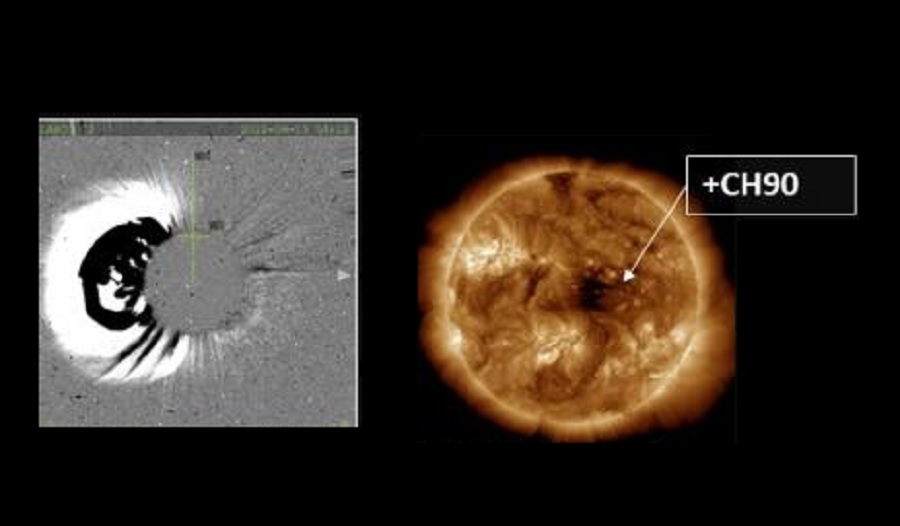
A G1-class Geomagnetic Storm is striking Earth today as impacts from a solar flare and coronal mass ejection (CME) tangle with the Earth’s magnetosphere. Yesterday, NOAA’s Space Weather Prediction Center (SPWC) issued a G1 Geomagnetic Storm Watch for Earth for today. In a statement, the SWPC said, “The CME associated with the M3/1n flare (R1-Minor radio blackout) that occurred (on June 13) is likely to skirt the Earth’s magnetosphere at approximately the same time the onset of a positive polarity coronal hole is expected to impact Earth. The combined effects will likely produce G1-Minor storming, with a chance for G2-Moderate storm levels if conditions occur simultaneously.”
Indeed, G1 conditions are being observed on Earth today. According to the SWPC, the geomagnetic storm conditions were first observed at 10:59am ET today. In the latest update from the SWPC, they say the area of impact will primarily be poleward of 60 degrees Geomagnetic Latitude. In this region, weak power grid fluctuations can occur on Earth. In space, minor impact on satellite operations are possible. Elsewhere, Mother Nature may light up the skies more south than usual; aurora could be visible at high latitudes across the northern tier of the United States, such as northern Michigan and Maine.
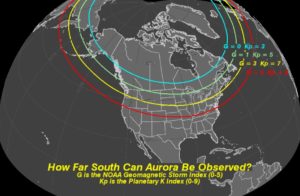
It is possible aurora could be visible more south/north than the line extending across the northern United States through Michigan and Maine. The Kp index helps define where aurora could be visible. Currently, SWPC scientists believe a Kp index of 5 will be reached in today’s event, but should a greater Kp be observed, it could send aurora even more south. As an example, a Kp of 8 could make aurora visible in skies free of light pollution as far south as the suburbs of Seattle, Chicago, Philadelphia, New York City, and Boston. Should the Kp index be lower, the aurora would move north, bringing a nighttime lightshow to portions of light-pollution-free Canada.
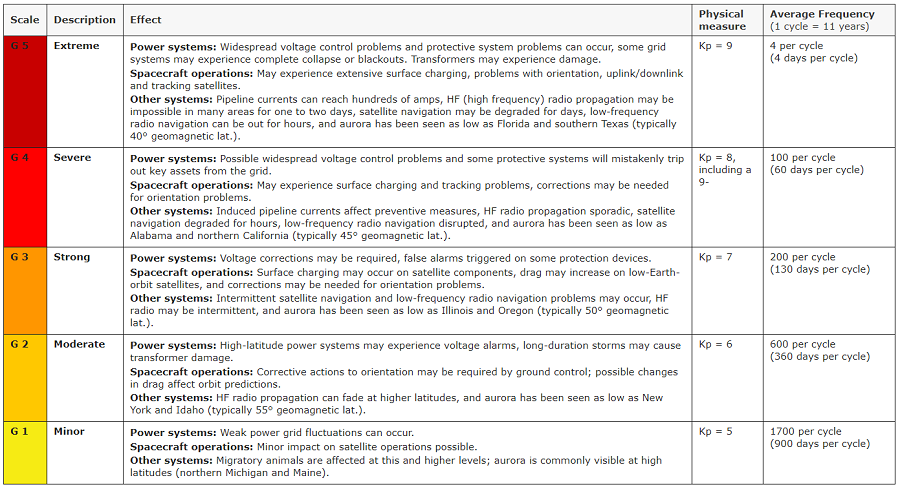
According to the SWPC, potentially hazardous geoelectric fields can be induced during geomagnetic storms. These geomagnetic storms are a form of space weather driven by enhanced currents in Earth’s magnetosphere and ionosphere and are observed at ground level as a time-varying magnetic field. As is well known from Faraday’s law, a time-varying magnetic field induces currents along natural and artificial conducting pathways by means of an induced electric field. When currents are induced in artificial conductors, unexpected and sometimes problematic effects can occur in the operation of the affected equipment

Image: NASA/Mary Pat Hrybyk-Keith
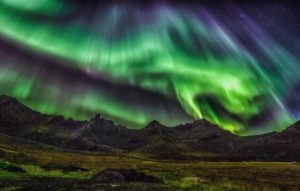
NOAA forecasters analyze a variety of solar data from spacecraft to determine what impacts a geomagnetic storm could produce. If Earth is experiencing the effects of a coronal hole and a coronal mass ejection is forecasted to impact Earth, the combined effects could result in a more significant impact and more intense geomagnetic storming. Analyzing data from the DSCOVER and ACE satellite is one way forecasters can tell when the enhanced solar wind from a coronal hole is about to arrive at Earth. A few things they look for in the data to determine when the enhanced solar wind is arriving at Earth:
• Solar wind speed increases
• Temperature increases
• Particle density decreases
• Interplanetary magnetic field (IMF) strength increases
While these solar events can help illuminate the sky with stunning aurora, they can also do considerable harm to electronics, electrical grids, and satellite and radio communications.
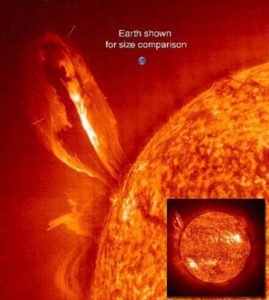
The 1859 incident, which occurred on September 1-2 in 1859, is also known as the “Carrington Event.” This event unfolded as powerful geomagnetic storm struck Earth during Solar Cycle 10. A CME hit the Earth and induced the largest geomagnetic storm on record. The storm was so intense it created extremely bright, vivid aurora throughout the planet: people in California thought the sun rose early, people in the northeastern U.S. could read a newspaper at night from the aurora’s bright light, and people as far south as Hawaii and south-central Mexico could see the aurora in the sky.
The event severely damaged the limited electrical and communication lines that existed at that time; telegraph systems around the world failed, with some telegraph operators reporting they received electric shocks.
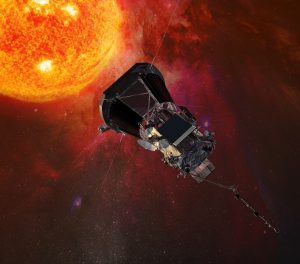
A June 2013 study by Lloyd’s of London and Atmospheric and Environmental Research (AER) in the U.S. showed that if the Carrington event happened in modern times, damages in the U.S. could exceed $2.6 trillion, roughly 15% of the nation’s annual GDP.
While typically known for their weather forecasts, the National Oceanic and Atmospheric Administration (NOAA) and its National Weather Service (NWS) is also responsible for “space weather.” While there are private companies and other agencies that monitor and forecast space weather, the official source for alerts and warnings of the space environment is the Space Weather Prediction Center (SWPC). The SWPC is located in Boulder, Colorado and is a service center of the NWS, which is part of NOAA. The Space Weather Prediction Center is also one of nine National Centers for Environmental Prediction (NCEP) as they monitor current space weather activity 24/7, 365 days a year.